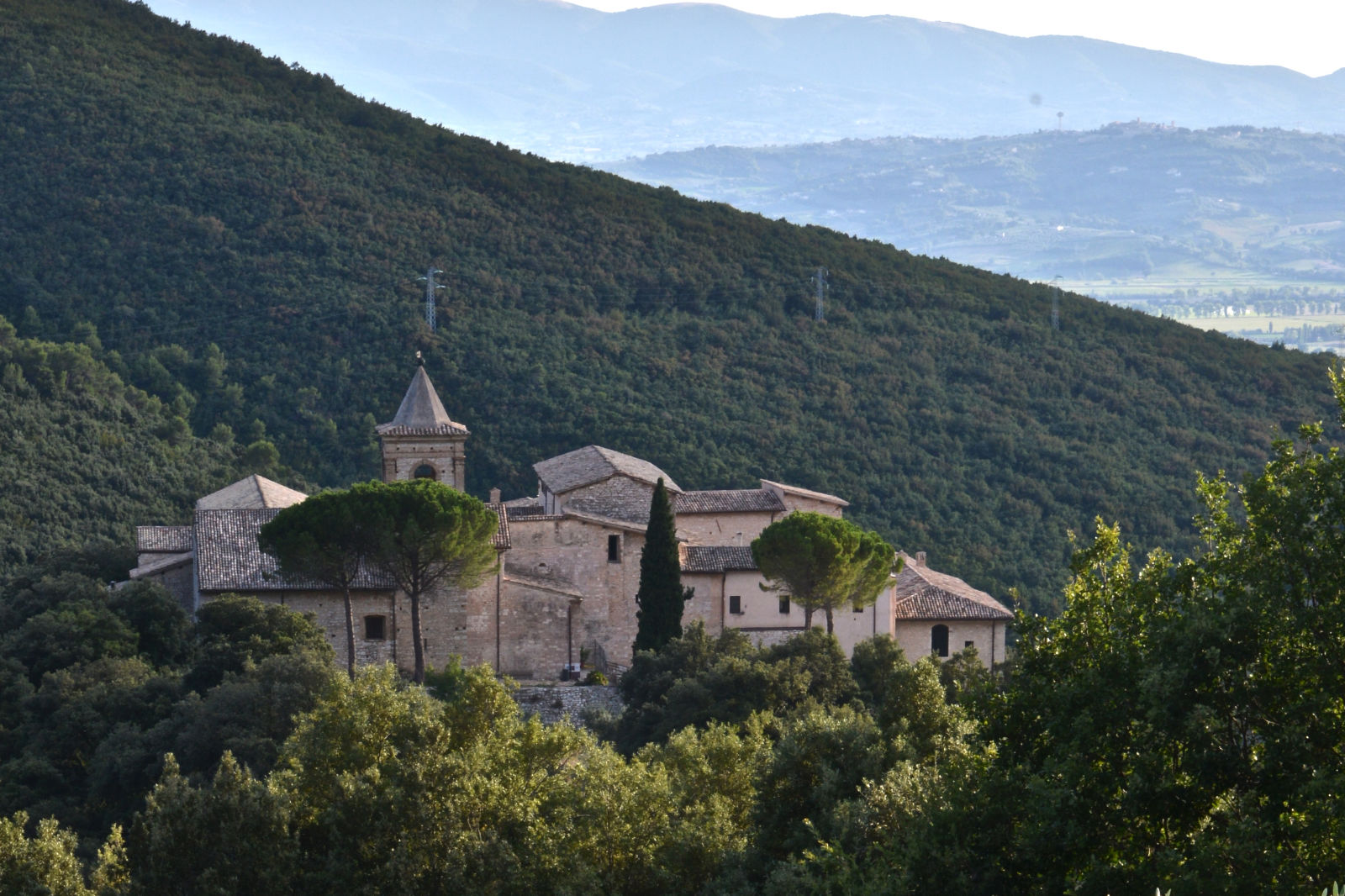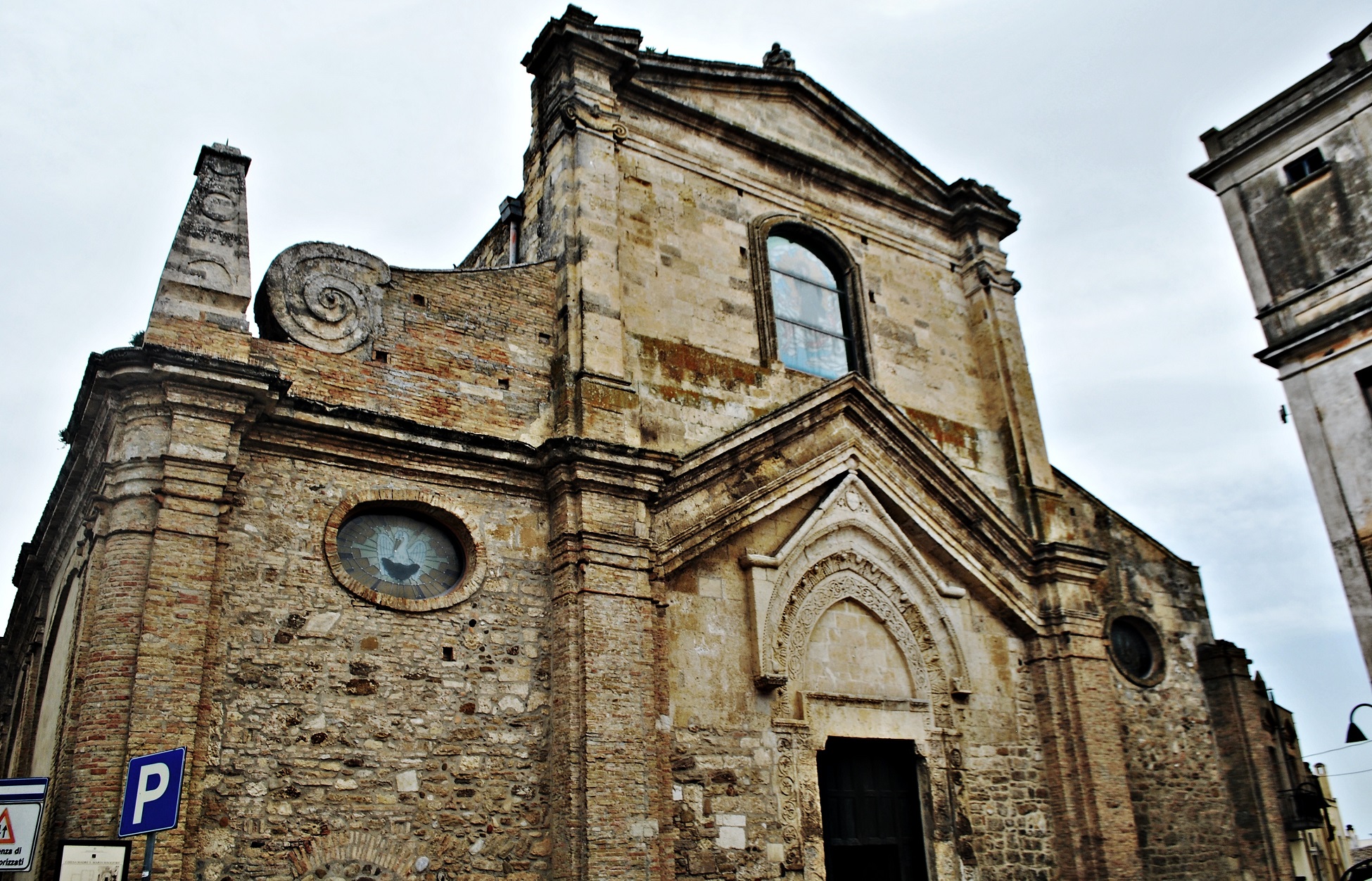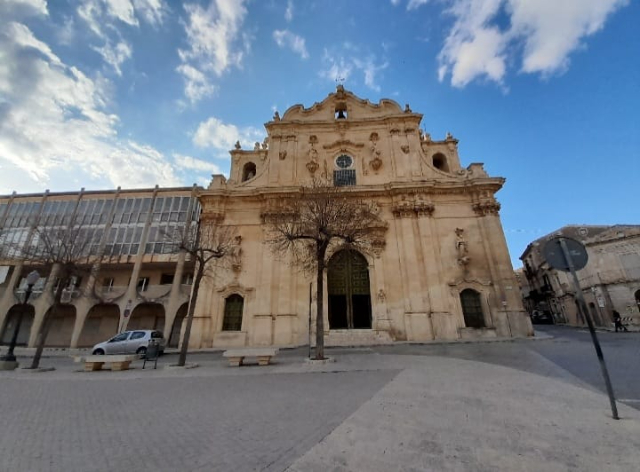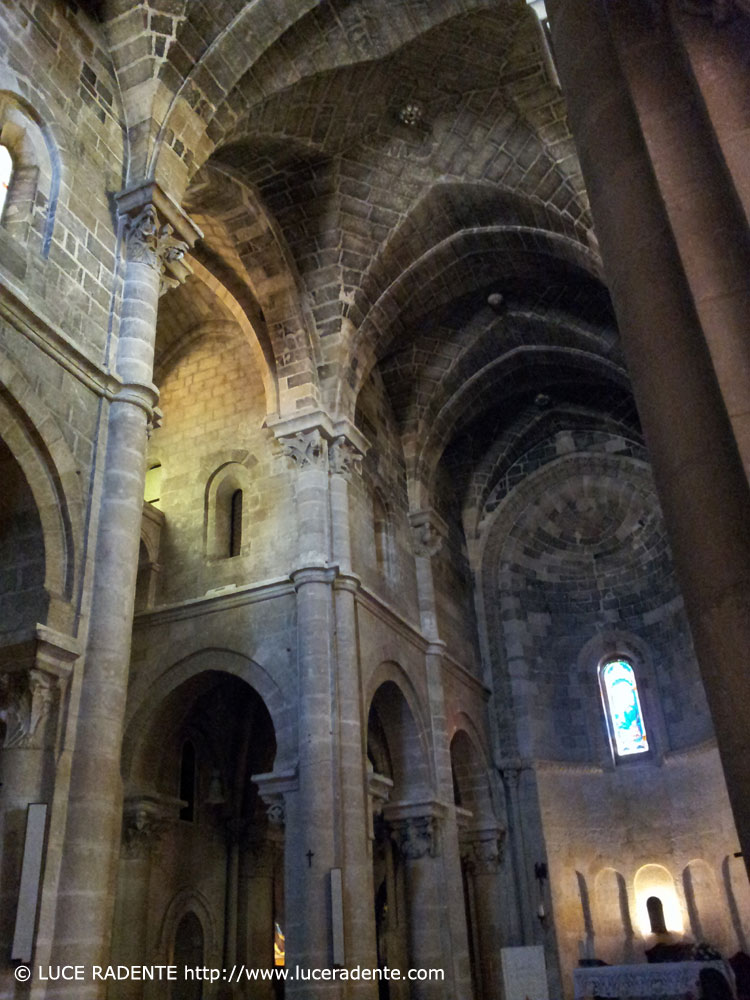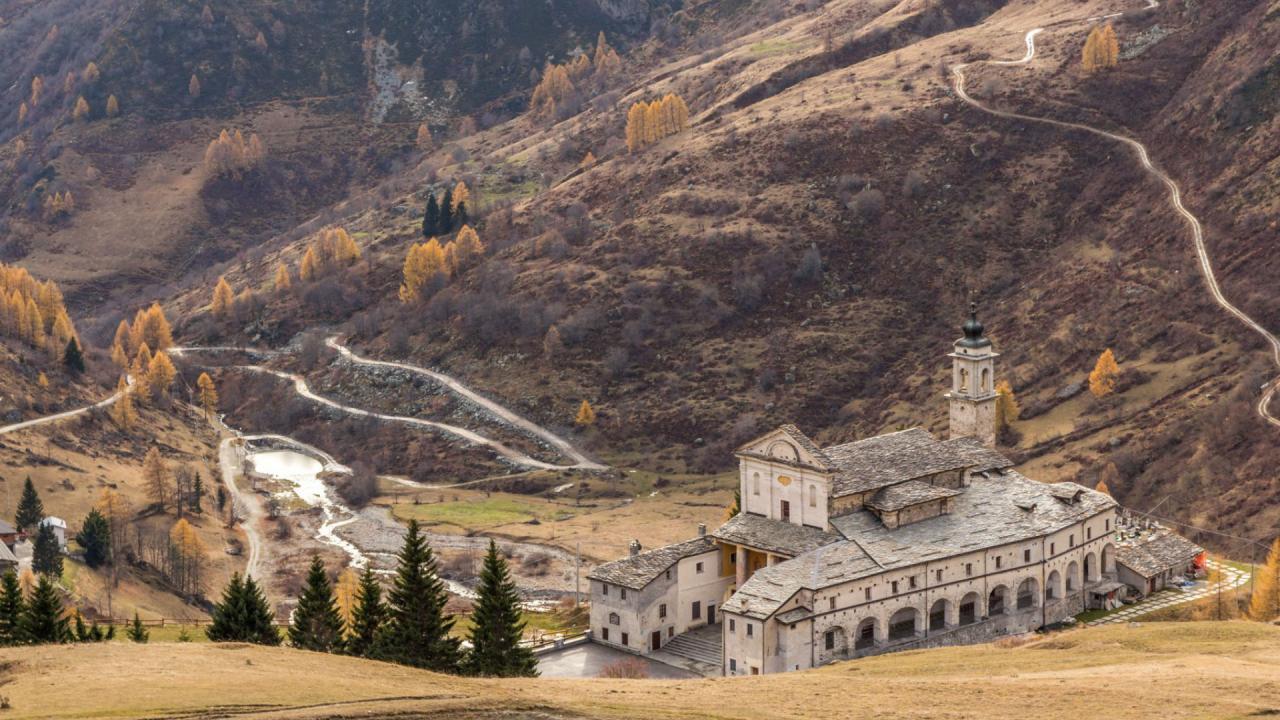A few kilometres from Foligno, immersed in nature, is the abbey of Sassovivo. Imposing to the sight, perched on the slopes of Mount Aguzzo, its mass of limestone stands out on the dark forest of oaks that covers the slopes of the surrounding mountains. It is one of the most ancient testimonies of the Benedictine presence in the Spoletina Valley.
The abbey complex is enclosed in a wall and develops around two courtyards (cloisters) determined by the constructions that have been made over time.
The first of the cloisters is located upstream and is bordered by the church, two dormitories and the building that houses the kitchen, the other is located downstream, in the form of elongated rectangle, circumscribed by the residence of the abbot and the local Infermeria.
The upstream cloister is a very rare example of Romanesque architecture and sculpture (1229). Rectangular in plan, it consists of a courtyard surrounded by a delicate portico composed of 128 twin columns, smooth or spiral, with lily capitals, supporting 58 round arches resting on a low wall. Above the arches is a beautiful classical entablature with coloured marble and two mosaic cornices.
The individual parts of the arches were made in Rome in the workshop of Vassalletto, Roman marble workers, and then transported and assembled on site, while the mosaic frames were made on site by Nicola Vassalletto.
The cistern in the middle of the cloister dates back to 1340 and was remodelled in 1623. To observe in all their beauty the elevations of the convent you have to go in the courtyard, from which you can reach the loggia of 1442 and the crypt of the eleventh century, the first nucleus of Sassovivo. On the walls of the cloister there are traces of painted plaster that suggest the development of a decoration on the entire surface of the same. In particular, in the northern arm it is possible to admire a frescoed lunette depicting the image of the Virgin enthroned with child in her arms (1280).
From the cloister you can access the Monastery and the large refectory with the back wall decorated with a fresco dated 1595, representing the Last Supper; further fragments of monochrome frescoes of the early 1400s can be appreciated on the walls of the Loggia del Paradiso, a passageway between the outside and the inside of the monastic complex.
The first structure of the abbey was built in 1082 by the hermit Mainardo, starting from a building situated inside an incomplete fortified enclosure. The hermit completed it giving it an almost square shape, built the church and arranged the kitchen with the refectory in the original building.
